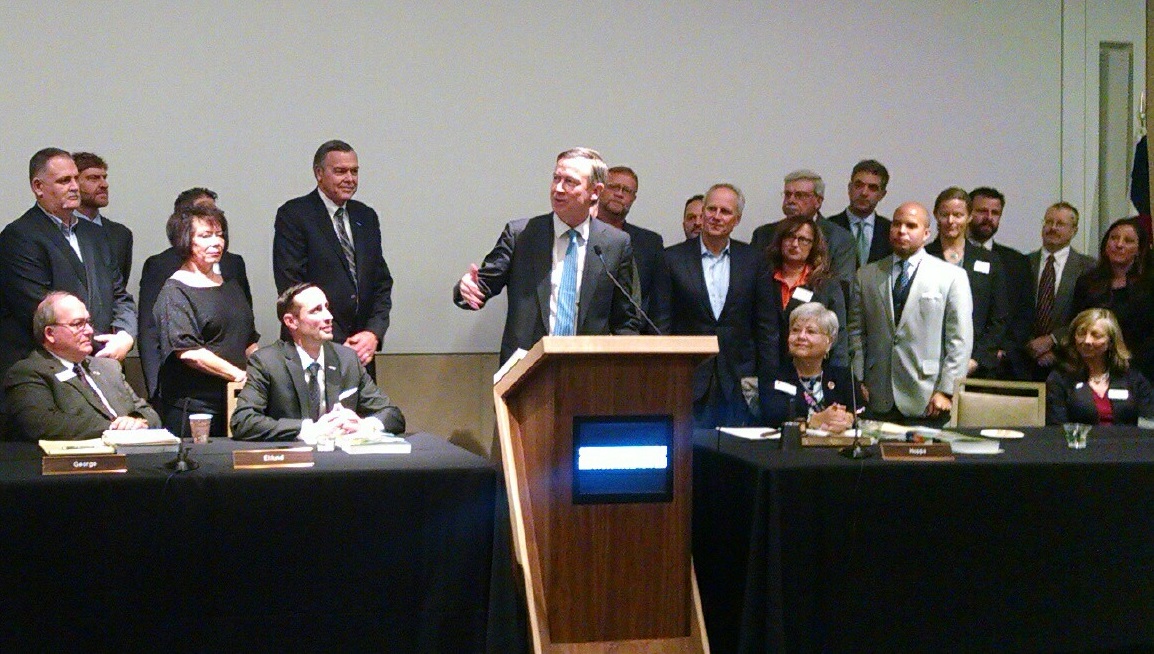
Is there enough water for Colorado’s future? That’s the plan.
Suspicion.
That’s the word I would use to describe the earliest reactions to Gov. Hickenlooper’s 2013 Executive Order to create Colorado’s first state water plan.
Why suspicion? Because Colorado has a century-old tradition of fighting about this very limited resource. West Slope residents don’t want the water there diverted to cities on the Front Range. Agricultural communities don’t want to see their lands dried up to feed urban growth.
And now the governor wants a plan for how we are all going to manage our water future together? There were plenty of people across the state who assumed this plan would be nothing more than a bunch of hidden agendas.
But two years later, we have Colorado’s first state water plan. It’s far from perfect, but no first-time plan ever is. My hope is that it creates a platform for us to collectively manage our water resources going forward. Given the uncertainties we face in our future, we have no choice but to take action now.
You can find out more about Colorado’s Water Plan here and even download the entire document — nearly 500 pages. If that seems daunting, here are my thoughts on why Colorado residents should care about this plan.
Where the plan hits the mark
Those of us at Denver Water who worked on the plan really pushed to include as much flexibility and adaptability as possible, and I think that is reflected in many parts of the plan.
We face tremendous uncertainty in our future with such issues as climate change, land-use planning, a changing regulatory environment and growth. Given these uncertainties, I don’t believe we can have just one strategy for dealing with our water future.
We need to preserve as many options as possible so we can be nimble and adaptable to changing conditions. We can’t rely solely on conservation to fix our water challenges. Focusing only on building new supply sources or relying more on reuse won’t solve our problems, either. We need multiple strategies that involve all of these tactics to create flexibility for dealing with the uncertainty we face.
A good example from the plan of maintaining flexibility is with the controversial issue of transbasin diversions. (Diverting water from one area of the state to another.) While I don’t believe this is the only way to bridge future gaps in our water supply, we need to keep that option available if it’s needed in the future. Working collaboratively with others around the state, we were able to create a framework within the plan for the possibility of future transbasin diversions.
When we first started working on the plan, I saw a lot of people building walls rather than bridges — basically protecting their own interests or being satisfied with the status quo. While the plan lays out many lofty ideas for what we “could” do, I believe it still falls short in outlining who is responsible for taking specific actions. That makes it easy for people to focus on why we can’t do anything, rather than how we can take action.
Others seem content with settling on what I call the “lowest common denominator,” which means taking the easiest solution to our problems. I think of the “buy and dry” phenomenon, where urban interests buy up water rights from agricultural land and then leave that land to simply dry up.
That may be an easy solution for some, but it’s not smart or sustainable. If groups who favor those kinds of solutions drive our water strategies going forward, we all lose.
Recognizing the value of water
I hope those who read the plan, including our customers, gain an appreciation for how incredibly challenging it is to bring water to the tap. Utilities like Denver Water have vast, complex systems of infrastructure that have reliably delivered water for nearly 100 years. But those systems must be maintained, and there is a cost to that.
There will be additional costs for investing in those multiple strategies to maintain a sustainable water future. Water will continue to be a tremendous value relative to other necessities in life, but the costs are rising. And as water becomes more and more scarce, people will have to pay more to get it to their taps.
What’s next?
Chapter 10 of Colorado’s Water Plan outlines the next steps. Some actions will fall to the executive branch or the State Legislature to move forward, while others can be done on a more local level. There are difficult conversations ahead, as we struggle with defined objectives around conservation, land-use planning, agricultural productivity, water storage projects and impacts to our environment. Looming over all of these discussions will be the issue of funding.
I hope our customers will follow these issues closely and understand that all water issues in Colorado are interconnected. This isn’t about West Slope vs. East Slope or agriculture vs. urban. It’s about all of Colorado working collectively to develop a sustainable water future.
Final thoughts
As Gov. Hickenlooper first requested, this plan can be a roadmap to vibrant and sustainable cities, productive agriculture, a strong environment and a robust recreation industry. But we must continue to move forward. If we fall back into our long-standing pitfalls of infighting and promoting self-interests, creating this plan will have been a colossal waste of time.
One only need look at California’s current water crisis to get a glimpse of what Colorado’s future could be without proper planning. We can’t wait for a similar crisis to happen here before we take action. If we aren’t prepared, we only have ourselves to blame for the cost to our citizens, to our economy, to our environment and to our future.
Colorado’s Water Plan can point us toward a sustainable water future. Let’s put that plan to good use!


